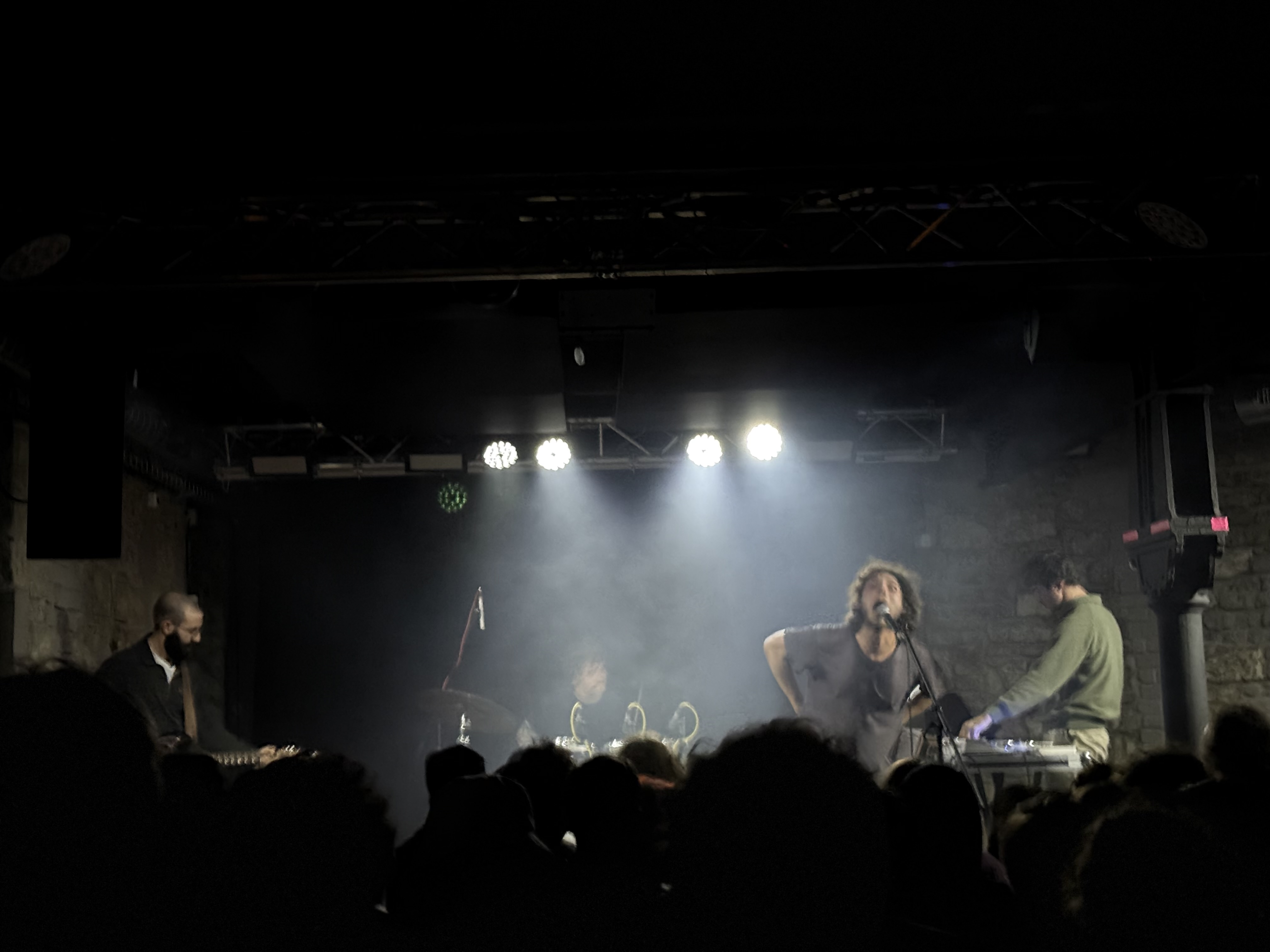There’s a telling moment five minutes in, when a faulty cable renders the enormous video screen blank.
The music stumbles on without its companion, utterly useless, a wash of synth and ambience that is playing off the laptop of a manchild Brooklynite, a man who knows his days of having a full head of hair are to be relished before they are taken from him forever. His parents don’t fully understand what he does for a living, when he visits at Christmas they nod mutely and patiently wait for him to go upstairs and get stoned.
His opposite number, whose baseball cap suggests he knows the writing’s on the wall, feyly directs the stage crew to fix a problem with his setup that is clearly his own fault.
He should be praised for trying to incorporate real lenses into his setup, and the videogamification of some of his landscapes remind me of what my first years play on the school computers in the corridor: the ones where you have to climb endless flights of stairs before falling off and plummeting right to the bottom again.
But there’s no purpose, no narrative thrust to any of it. It is the work of a man who has nothing to say, and an endless sea of filters and polygon generators with which to fail to tell it.
Like much of the audience, a future in advertising beckons. I regard the crowd. How many of them have paid for their ticket? I certainly haven’t. I got mine from my friend Elen who got it free with an arts magazine subscription.
I feel sorry for the statuesque girl with the little black number, who looks a little peeved that she got all dolled up for this.
I feel less sorry for the peroxide fringe in front of me, who has her phone fonts all in red, and who is pretending to love it but has to keep checking if her (also baseball-capped) partner is loving it too. I switch my tape off and leave early.
These sorts of “emperors new clothes” shows make me furious: that all the grand resources of the Nova Spirala should be squandered on this foolishness.
A lesson to all aspiring creatives: with shows like these, there is even more reason to try.
*
Event info: https://novaspirala.cz/en/program/oneohtrix-point-never-en/
Bootleg: https://drive.google.com/file/d/1nSX-1TrcHH4Lbu9J6_n9bjm_ltqdz6IF/view?usp=sharing





























































